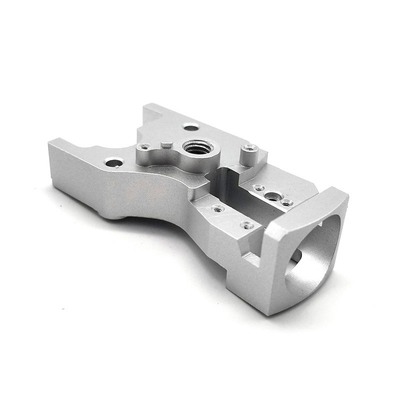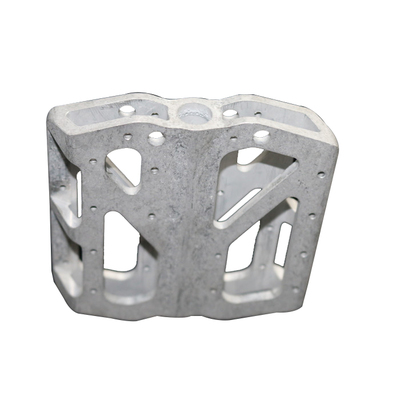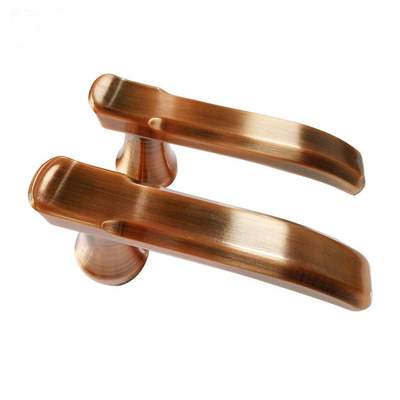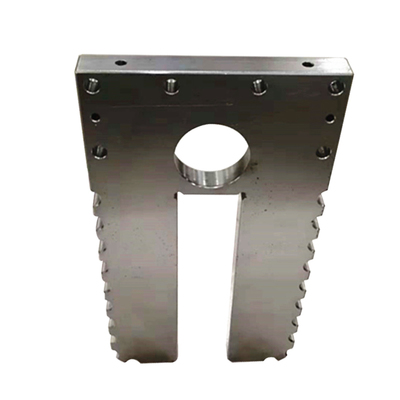Best CNC Lathe Types & Parts – Exploring 8 Different Components of CNC Lathe Machines and Their Types
2023-09-18
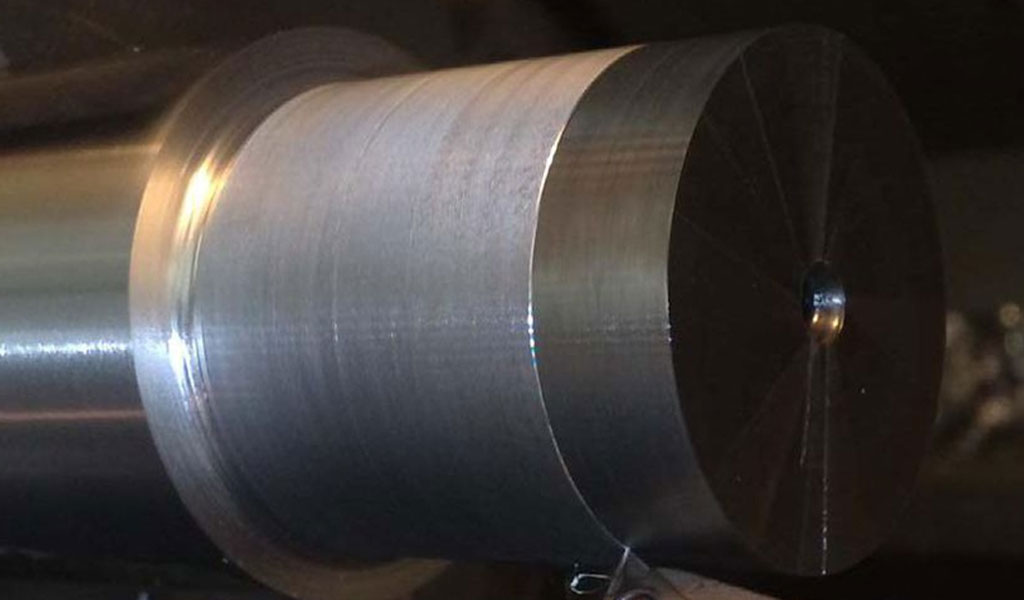
A Brief History of Lathe Machines
Before we delve into the intricate world of CNC lathes, it's important to appreciate the historical significance of lathe machines. These machines have been instrumental in shaping human civilization by enabling the transformation of raw materials into useful objects. The roots of lathe machines can be traced back to ancient civilizations, where skilled artisans used manual lathes to craft items from wood, metal, and other materials. The basic principle of a lathe involves rotating a workpiece while a cutting tool shapes it. Early lathes were operated by hand, requiring considerable skill and patience. Over time, the design and functionality of lathe machines evolved. During the Industrial Revolution, significant advancements were made in lathe technology, marking a pivotal moment in manufacturing history. Power-driven lathes were introduced, revolutionizing the efficiency and precision of machining processes. This transition from manual to power-driven lathes laid the foundation for the subsequent leap to CNC lathes.The Transition to CNC Lathes
The advent of computer numerical control (CNC) technology in the mid-20th century marked a turning point in the evolution of lathe machines. CNC lathes replaced the need for manual operation with computer-controlled precision. This revolutionary shift offered several advantages, transforming the manufacturing landscape:- Automation: CNC lathes eliminated the need for skilled manual labor to operate the machines. Instead, they could be controlled by computer programs, reducing human error and labor costs.
- Precision: CNC lathes brought an unprecedented level of precision to machining processes. They could create parts with extremely tight tolerances, ensuring consistency and quality.
- Complexity: CNC lathes were capable of machining intricate parts with ease. The ability to follow complex toolpaths and execute precise movements opened up new possibilities in design and production.
- Efficiency: Automation and computer control significantly reduced production times. CNC lathes could run continuously, 24/7 if needed, leading to increased productivity.
- Repeatability: CNC lathes excelled in producing identical parts with minimal variation. This consistency was critical in industries that demanded high-quality, standardized components.
Key Advantages of CNC Lathe Machines
The adoption of CNC lathe machines has been driven by a multitude of advantages, making them indispensable in various industries. Here are some key benefits of CNC lathe machines:- Precision: CNC lathes can produce parts with exceptional precision and accuracy. They are capable of achieving tight tolerances that would be difficult to replicate manually.
- Efficiency: Automation reduces the reliance on manual labor and significantly speeds up the production process. CNC lathes can work tirelessly, leading to increased output.
- Complex Geometry: CNC lathes can handle complex geometries and intricate designs, making them suitable for a wide range of applications, from aerospace components to medical devices.
- Flexibility: Changeovers between different parts or products can be accomplished relatively quickly with CNC lathes. This flexibility is crucial in today's dynamic manufacturing environment.
- Consistency: CNC lathes can produce identical parts repeatedly, ensuring consistent quality and reducing rejection rates.
- Reduced Waste: The precision of CNC lathes minimizes material waste, saving both time and resources.
- Data Monitoring: CNC lathe machines often incorporate data monitoring and feedback systems, allowing operators to track performance and make adjustments in real-time.
- Customization: CNC lathes can be programmed to produce customized or one-of-a-kind parts, catering to niche markets and specialized requirements.
The CNC Lathe Machine Components
To understand how CNC lathes work and their role in modern manufacturing, it's crucial to familiarize ourselves with their key components. Each part serves a specific function in the machining process, contributing to the overall precision and efficiency of the machine. Let's delve into these components in detail:Bed
The bed is the foundation of the CNC lathe machine. It provides a stable and rigid platform for all other components and ensures that the machine operates with minimal vibration and deflection. Beds are typically made of materials like cast iron or high-quality steel to maintain their structural integrity. The bed's design and construction directly impact the machine's accuracy and stability during the machining process.Headstock
The headstock is a critical component of the CNC lathe, situated at one end of the machine. It houses the spindle, which is responsible for rotating the workpiece. The headstock contains various gears, bearings, and mechanisms to control the spindle's speed and direction. The design and capabilities of the headstock can vary significantly depending on the type and model of the CNC lathe. Some advanced CNC lathes may incorporate features like variable-speed spindles for optimal machining performance.Tailstock
Located at the opposite end of the headstock, the tailstock serves a vital role in supporting the workpiece, especially when machining long and slender parts. It provides additional stability and prevents workpiece deflection during the machining process. The tailstock often features a quill that can be adjusted to apply pressure to the workpiece, holding it securely in place. Tailstocks can be manually operated or equipped with automated controls for precise positioning and clamping.Carriage
The carriage is a movable component that holds the cutting tool and can traverse along the length of the bed. It consists of two primary parts:- Saddle: The saddle is mounted on the bed and can move along it. It carries the cross-slide and other tool-related components.
- Cross-Slide: The cross-slide is positioned perpendicular to the saddle and can move horizontally or radially. It allows for precise tool positioning and movement during the machining process. The combination of saddle and cross-slide movement enables the CNC lathe to perform various cutting operations with accuracy.
Tool Turret
The tool turret is a crucial component in CNC lathes, enhancing their efficiency and versatility. This rotating tool holder is typically mounted on the carriage and houses multiple cutting tools. The ability to hold multiple tools allows for automatic tool changes, reducing downtime and improving productivity. Advanced CNC lathes may feature tool turrets with a wide range of tool positions, enabling the use of various tools for different machining operations without manual intervention.Chuck
The chuck is a gripping device that securely holds the workpiece in place while it rotates during machining. Chucks come in various types, including three-jaw chucks, four-jaw chucks, and collet chucks. The choice of chuck depends on the workpiece's size, shape, and the specific machining requirements. CNC lathe chucks are typically designed to provide a strong grip on the workpiece to prevent slippage during machining.Spindle
The spindle is a critical part of the headstock responsible for rotating the workpiece. It connects to the chuck and imparts the necessary rotational motion to the workpiece, allowing cutting tools to shape it. Spindles can vary in design, with some CNC lathes featuring a single spindle, while others may have multiple spindles for simultaneous machining of multiple workpieces. Spindle speed and direction are controlled through the headstock's mechanisms and CNC programming.Control Panel
The control panel is the user interface of the CNC lathe, allowing operators to input and execute machining programs. It consists of a computer or control unit, a keyboard or touchscreen interface, and various control buttons and switches. Operators use the control panel to set parameters such as spindle speed, feed rate, tool selection, and toolpath coordinates. CNC lathes are known for their programmability, and the control panel is where operators create, edit, and execute machining programs. Modern CNC lathes may also incorporate features like graphical interfaces and connectivity for data transfer and monitoring. Understanding the functions and interactions of these CNC lathe components is essential for operating the machine effectively and achieving precise machining results. In the following sections of this article, we will explore the different types of CNC lathes available in the market and their specific applications in various industries.Types of CNC Lathes
CNC lathes come in various configurations and designs, each tailored to specific machining needs and applications. Let's explore eight different types of CNC lathes, highlighting their unique features and typical use cases:Flat Bed CNC Lathe
Overview: The flat bed CNC lathe, also known as a horizontal CNC lathe, is characterized by its horizontal orientation, with the workpiece mounted parallel to the ground. The flat bed design offers stability and ease of access, making it suitable for heavy-duty and precision machining tasks. Key Features:- Sturdy and stable construction.
- Suitable for machining long and heavy workpieces.
- Ideal for cylindrical and conical turning operations.
- May have a single or multiple spindles.
- Aerospace components.
- Large shafts and cylinders.
- Hydraulic components.
- Oil and gas industry parts.
Slant Bed CNC Lathe
Overview: Slant bed CNC lathes feature a bed that is inclined at an angle, typically around 30 to 45 degrees. This slanted design allows for efficient chip removal and improved operator visibility. Slant bed lathes are known for their rapid tool changes and high-speed machining capabilities. Key Features:- Excellent chip evacuation due to gravity.
- Improved operator ergonomics and visibility.
- High spindle speeds and rapid tool changes.
- Versatile for a wide range of turning operations.
- Automotive components.
- Medical devices.
- Precision parts with complex geometries.
- Small to medium-sized production runs.
Swiss-type CNC Lathe
Overview: Swiss-type CNC lathes are designed for precision and intricate machining of small, high-precision components. They are known for their exceptional accuracy and the ability to perform both turning and milling operations simultaneously. Swiss lathes often feature sliding headstocks and multiple toolholders. Key Features:- Sliding headstock design.
- Multiple toolholders for multitasking.
- Exceptional precision and tight tolerances.
- Ideal for small-diameter and long, slender workpieces.
- Watchmaking.
- Medical implants and instruments.
- Electronics and connectors.
- Aerospace micro-components.
Vertical CNC Lathe
Overview: Vertical CNC lathes, also known as VTLs (Vertical Turret Lathes), have a vertical orientation, with the workpiece mounted vertically. These lathes are particularly suitable for large, heavy workpieces that require turning, milling, and drilling operations in a single setup. Key Features:- Vertical orientation for efficient chip evacuation.
- Robust construction for heavy-duty machining.
- Turret with multiple tool positions for versatility.
- Ideal for large-diameter components.
- Large gears and gear blanks.
- Wind turbine components.
- Railway wheels and axles.
- Ship propellers.
Multi-Spindle CNC Lathe
Overview: Multi-spindle CNC lathes are designed for high-volume production of small to medium-sized parts. These lathes feature multiple spindles that can work simultaneously on separate workpieces. Multi-spindle lathes are renowned for their productivity and efficiency. Key Features:- Multiple spindles for parallel machining.
- High-speed production with reduced cycle times.
- Automatic workpiece loading and unloading.
- Suitable for mass production.
- Automotive and motorcycle components.
- Fasteners and screws.
- Plumbing fittings.
- Aerospace fasteners.
Gang Tool Lathe
Overview: Gang tool lathes are compact CNC lathes that employ a gang tooling system, where multiple tools are mounted on a single toolpost. This design allows for rapid tool changes and is well-suited for small parts production with minimal tooling setup. Key Features:- Compact and space-saving design.
- Quick tool changes and setups.
- Precise and fast production of small parts.
- Cost-effective for small-batch manufacturing.
- Electronic connectors.
- Medical instruments.
- Watch components.
- Aerospace fasteners.
CNC Turning Center
Overview: CNC turning centers combine the capabilities of a lathe with those of a machining center, allowing for both turning and milling operations in a single machine. These versatile machines are known for their efficiency and can handle a wide range of workpiece sizes and shapes. Key Features:- Turning and milling capabilities in one machine.
- Multiple tool stations for various operations.
- Suitable for complex parts with milled features.
- Versatile for small to medium-sized production runs.
- Aerospace components with intricate features.
- Automotive transmission components.
- Hydraulic and pneumatic parts.
- General precision machining.
Combination Lathe-Mill CNC Machine
Overview: Combination lathe-mill CNC machines, as the name suggests, combine the functions of a lathe and a milling machine in a single unit. These machines are space-saving and versatile, capable of handling both turning and milling tasks. Key Features:- Space-saving design for small workshops.
- Suitable for prototyping and small-scale production.
- Precise machining of cylindrical and flat surfaces.
- Combines turning and milling operations.
- Prototype development.
- Toolroom machining.
- Repair and maintenance tasks.
- Education and training.
Choosing the Right CNC Lathe
Selecting the right CNC lathe for your manufacturing needs is a critical decision that can significantly impact the efficiency and quality of your production processes. To make an informed choice, consider the following key factors:Understanding Your Manufacturing Needs
The first step in choosing the right CNC lathe is to have a clear understanding of your specific manufacturing requirements. This includes:- Workpiece Size and Complexity: Determine the range of workpiece sizes and shapes you need to produce. Consider whether you require the lathe for small, intricate components or large, heavy-duty parts.
- Production Volume: Assess your production volume. Are you manufacturing prototypes, small batches, or high-volume production runs? Different types of CNC lathes are optimized for various production quantities.
- Materials: Identify the materials you'll be machining. Some materials, like metals or exotic alloys, may require specialized cutting tools and equipment.
- Tolerances and Surface Finish: Define the level of precision and surface finish your parts must meet. Tight tolerances and fine surface finishes may necessitate specific CNC lathe features.
- Machining Processes: Consider the specific machining operations you need to perform, such as turning, milling, drilling, or threading. Some CNC lathes are better suited for multitasking and complex operations.
Budget Considerations
Budget constraints play a significant role in the CNC lathe selection process. It's important to strike a balance between your budget limitations and your manufacturing requirements. Key budget considerations include:- Initial Investment: CNC lathes vary widely in terms of cost. Assess your budget to determine whether you can afford a new machine or if a used or refurbished CNC lathe is a more viable option.
- Operating Costs: Consider ongoing expenses, including tooling, maintenance, and energy consumption. Some high-end CNC lathes may offer energy-saving features that reduce long-term operating costs.
- Return on Investment (ROI): Calculate the potential ROI based on increased productivity, reduced labor costs, and improved quality. This assessment will help justify the initial investment.
Evaluating Precision and Accuracy
Precision and accuracy are paramount in many manufacturing applications. To ensure your CNC lathe meets your quality standards, pay attention to the following aspects:- Machine Rigidity: A rigid machine base and components are essential for maintaining accuracy during heavy machining operations.
- Spindle Speed and Power: Choose a CNC lathe with an appropriate spindle speed range and power to handle your workpiece materials effectively.
- Tooling Options: Assess the availability and compatibility of tooling options. High-quality tooling is essential for achieving precision.
- Control System: The CNC control system should offer precise control of cutting parameters, tool positioning, and tool changes.
- Feedback Systems: Look for CNC lathes equipped with feedback systems, such as encoders, to ensure accurate positioning and error correction.
- Testing and Inspection: Before purchasing, request test cuts or inspection reports to verify the machine's precision and accuracy.
Considering Automation and Integration
Automation and integration capabilities can significantly enhance the efficiency of your manufacturing processes. Evaluate the following automation-related factors:- Tool Changer: Automatic tool changers reduce downtime between tool changes and can be essential for complex machining tasks.
- Bar Feeders and Part Loaders: These automation components can streamline the loading and unloading of workpieces, especially in high-volume production.
- Integration with CAD/CAM Systems: Compatibility with computer-aided design (CAD) and computer-aided manufacturing (CAM) software allows for seamless programming and machining.
- Data Monitoring and Connectivity: Modern CNC lathes often feature data monitoring systems that provide real-time performance information. Consider whether data connectivity and remote monitoring are important for your operations.
- Industry 4.0 Readiness: If you're planning for the future, look for CNC lathes that are compatible with Industry 4.0 principles, enabling smart manufacturing, predictive maintenance, and data-driven decision-making.
In Conclusion
In this comprehensive exploration of CNC lathes, we have delved into their various components, types, applications, and the critical considerations when choosing the right machine for your manufacturing needs. Let's recap the key points discussed in this article and contemplate the role of CNC lathes in the future of manufacturing.Recap of Key Points
- CNC Lathe Components: We started by examining the essential components of CNC lathes, including the bed, headstock, tailstock, carriage, tool turret, chuck, spindle, and control panel. Understanding these components is fundamental to operating and optimizing CNC lathe machines effectively.
- Types of CNC Lathes: We explored eight distinct types of CNC lathes, from the versatile flat bed and slant bed lathes to specialized machines like Swiss-type lathes and multi-spindle lathes. Each type caters to specific machining requirements and applications.
- Choosing the Right CNC Lathe: Selecting the appropriate CNC lathe involves understanding your manufacturing needs, considering budget constraints, evaluating precision and accuracy requirements, and pondering automation and integration possibilities. The right choice can profoundly impact productivity and quality.
- The Role of CNC Lathes: CNC lathes have played a pivotal role in modern manufacturing by offering precision, efficiency, flexibility, and automation. Their adoption has led to improved productivity, reduced labor costs, and the ability to manufacture complex and high-quality components.
The Role of CNC Lathes in the Future of Manufacturing
As we look ahead, CNC lathes are poised to continue shaping the future of manufacturing in several ways:- Industry 4.0 and Smart Manufacturing: The integration of CNC lathes with Industry 4.0 principles is becoming increasingly prevalent. These machines will play a crucial role in connected, data-driven factories, facilitating real-time monitoring, predictive maintenance, and adaptive manufacturing.
- Advances in Materials and Cutting Tools: CNC lathes will adapt to accommodate emerging materials and cutting tool technologies. This includes the machining of advanced composites, high-temperature alloys, and other exotic materials used in aerospace, automotive, and other industries.
- Integration of Artificial Intelligence: AI-driven algorithms will enhance CNC lathe performance by optimizing tool paths, predicting tool wear, and improving overall efficiency. This integration will lead to even greater precision and productivity.
- Customization and Personalization: CNC lathes will continue to enable the production of customized and personalized parts, catering to niche markets and individualized requirements. This aligns with the growing demand for unique, tailor-made products.
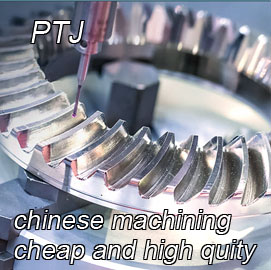
Our Services
- 5 Axis Machining
- Cnc Milling
- Cnc Turning
- Machining Industries
- Machining Process
- Surface Treatment
- Metal Machining
- Plastic Machining
- Powder Metallurgy Mold
- Die Casting
- Parts Gallery
Case Studies
- Auto Metal Parts
- Machinery Parts
- LED Heatsink
- Building Parts
- Mobile Parts
- Medical Parts
- Electronic Parts
- Tailored Machining
- Bicycle Parts
Material List
- Aluminum Machining
- Titanium Machining
- Stainless Steel Machining
- Copper Machining
- Brass Machining
- Super Alloy Machining
- Peek Machining
- UHMW Machining
- Unilate Machining
- PA6 Machining
- PPS Machining
- Teflon Machining
- Inconel Machining
- Tool Steel Machining
- More Material
Parts Gallery

